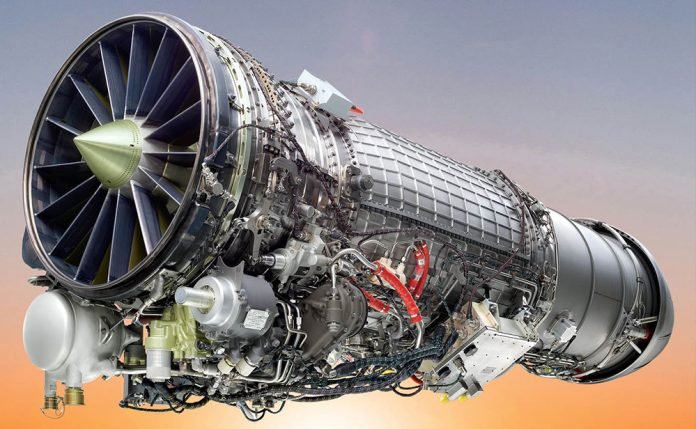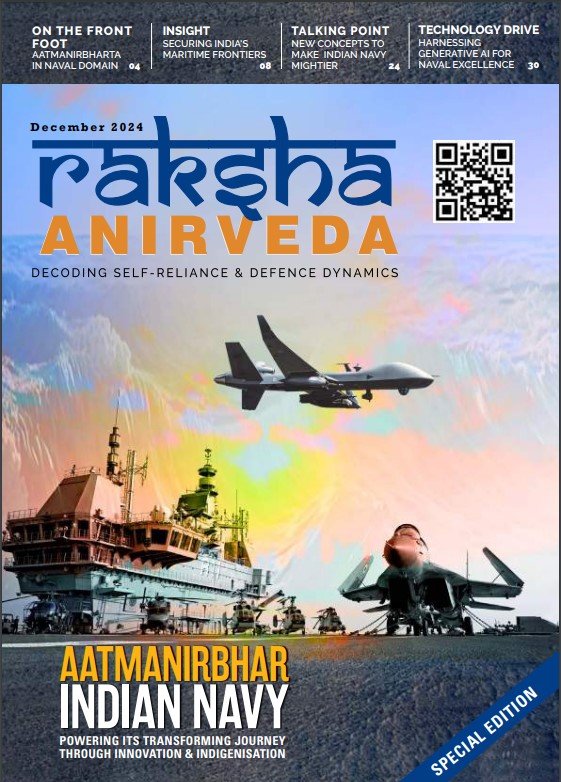India’s manufacturing schedule of Tejas series aircraft has been significantly derailed and delayed by the non-availability of aeroengines. General Electric’s (GE) contract with Hindustan Aeronautics Limited (HAL) mandated the supply of 99 F404-IN20 aeroengines for Tejas Mk 1A aircraft. This was one of the largest contracts, valued at US$ 716 million, signed by HAL. The contract, signed in 2021, envisaged the first set of engines to begin arriving in 2022 and the supply of all 99 engines to be completed by 2029. The programme, however, is now nearly three years behind schedule, with the first engine yet to arrive in India as of March 2025. In turn, the development testing and series production of Mk 1A is now behind schedule by more than three years.
Tejas Mk2, which is planned to be a 4.5 generation aircraft in the Rafale class, will be powered by another GE engine, F414-INS6. Mk2, a bigger aircraft with much higher operational capability, will become the backbone of the IAF and hence, will be produced in large numbers. However, MK 2 is considerably delayed and may also face significant supply chain problems. Concerned by these delays, the IAF obtained the government’s approval for an additional order of 97 Mk 1As. HAL has also chipped in by establishing three production lines for a production rate of 24 aircraft per year. However, supply chain issues, starting with GE’s F404-IN20 engines, could prove to be a spoiler.
General Electric has now confirmed that it can, at best, supply 10 × F404-IN20 engines a year as against the contractual commitment of higher numbers. This is clearly at odds with HAL’s production plans. This issue raises questions about the US as a reliable source for defence supplies, geopolitical issues at play, and India’s inability to leverage its defence purchases effectively. The IAF will need to find better solutions to its force structure problems and advise the government accordingly.
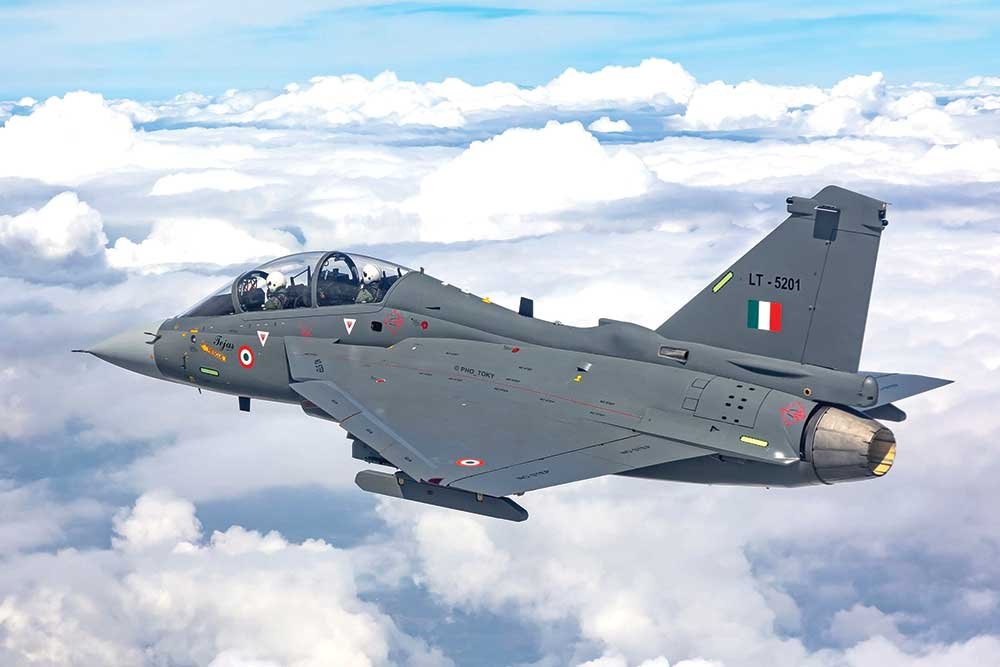
Geopolitics of Aeroengine Supplies, Production, and Technology Issues
General Electric stated that its production schedules for F404-IN20 engines have been hit by supply chain problems and, hence, delays. IN20 is an upgraded version of the 404 version, using new materials to handle higher temperatures to produce a wet thrust of 84 kN. While the financial insolvency of one of the critical suppliers from South Korea is cited as the main reason, one cannot ignore other geopolitical factors. One of the critical components is the Engine Charge Amplifier, supplied by Denmark’s firm AVN Energy. The company withheld the supply of these engine charge amplifiers due to EU sanctions on Russia because of the war in Ukraine, implying fears that India might route these products to help Russia. Not only is this preposterous, but it also raises the serious problem of US unreliability. Since India has taken a neutral stance over the Russia-Ukraine conflict, a stand that has not gone down well with the USA and the EU, this delay may be another way of sending a calibrated message to India.
India is fiercely protective of its strategic autonomy and occupies a unique geopolitical position, as it balances its long-standing ties with Russia against a growing partnership with the West, particularly the United States
A recent New York Times article alleging that HAL may have rerouted critical aerospace components to Russia is proof of this thought process in the governments concerned. India dismissed the NYT article as a hyperbole and voiced serious objections to such false propaganda. Notwithstanding this, Western nations continue to suspect that India could serve as an intermediary, potentially rerouting sensitive technologies to Russia. This is part of a larger strategy, as the USA has explicitly stated in the past, to wean India away from military equipment dependency on Russia in the years to come.

India is fiercely protective of its strategic autonomy and occupies a unique geopolitical position, as it balances its long-standing ties with Russia against a growing partnership with the West, particularly the United States. By being part of the Quad and with increased defence collaborations with Western nations, India is deepening its strategic alignment with the US and countries like France, Germany, Australia, Sweden, and the UK. However, Denmark’s decision to enforce sanctions on a critical aerospace component underscores the tension created by this dual engagement. These issues highlight the vulnerabilities in India’s defence supply chain when geopolitical pressures disrupt access to critical components.
That HAL tasked an Indian private company to indigenise the product through substitution engineering is a validation of the geopolitical connotations of this delay. Indigenisation of this product may take up to two years, further adding to the delays. Indigenisation strategy, however, is a smart move.
HAL should have foreseen these problems while signing the contract in 2021. Delays were inevitable as GE had closed the production lines of GE 404 engines in 2016. Reviving it involved design work for upgrading engine performance, re-establishing supply chains, and addressing sanction-related issues.
All these issues highlight the urgency for India to make the right strategic decisions with short-term solutions and long-term strategic gains in aeroengine capabilities. To adopt the most effective strategy, India will need to review its past mistakes, consider geopolitical barriers, and adopt solutions solely in our national interests.
India’s failure to master aeroengine capability, despite numerous opportunities such as the E-300 in the 1960s and the Kaveri since 1989, reflects a persistent lack of strategic foresight and acumen
India’s Strategic Decision-Making and Problems of Strategic Discontinuity
India’s struggles to find optimal aeroengines for indigenous fighter programmes go back a long way. India was one of the first countries in the global south to design, develop, and manufacture a supersonic fighter aircraft, the HF-24. The government displayed considerable foresight in bringing Dr Kurt Tank of Messerschmitt fame to HAL to establish and lead a design team to develop HF-24, India’s first indigenous fighter aircraft. This aircraft had the best design in the 1960s, and was distinctly ahead of its time. It was, however, underpowered due to the non-availability of an optimal jet engine, a victim of Cold War geopolitics.

At the same time, as HF-24 was being developed, Egypt engaged the services of Willy Messerschmitt and his team to design and develop a supersonic interceptor for the Egyptian Air Force. This was the HA-300. Indian test pilot Group Captain Kapil Bhargava performed the aircraft’s first test flight. In addition, with the Egyptian government’s support, Willy Messerschmitt brought the Austrian Ferdinand Brandner to design and develop the E-300 engine of 10,582 lbf thrust output with reheat and first ran in July 1963. Joining hands with Egypt (both countries were NAM partners and founding members), India shared funding for engine development to use it as the powerplant for HF-24 aircraft. Egypt invested a huge amount of 135 million Egyptian Pounds.
The engine recorded its first flight on the second prototype aircraft on July 22, 1965. However, on account of geopolitical and economic factors that arose from Egypt’s defeat in the 1967 war with Israel, Egypt abandoned the programme in 1969. This was a great opportunity for India to take charge of the E-300 engine programme. However, with Egypt’s exit, India also abandoned the programme.
India not taking over the E-300 engine programme is a fascinating case of missed opportunity shaped by strategic, technical, and geopolitical factors. India’s decision on E-300 was not only a missed opportunity, but also strategically short-sighted. The problem is related to the orientation of India’s leadership, which, for some strange reason, had not grasped the fact that aeroengines are the cornerstone of great power status – vital for autonomy and influence – like China did post the Sino-Soviet split or Egypt under Nasser. India saw them as technical add-ons and not strategic imperatives. This was further complicated by India’s low and delayed funding, short-term focus, and the lack of appreciation for failures as stepping stones to success.
The lack of a long-term coherent strategy with respect to aeroengine development resulted in decisions characterised by strategic discontinuity. For example, India had Kurt Tank for the HF-24 Marut design but did not pair him with an engine push like Egypt’s Nasser did with Brandner’s E-300 for the HA-300 aircraft.
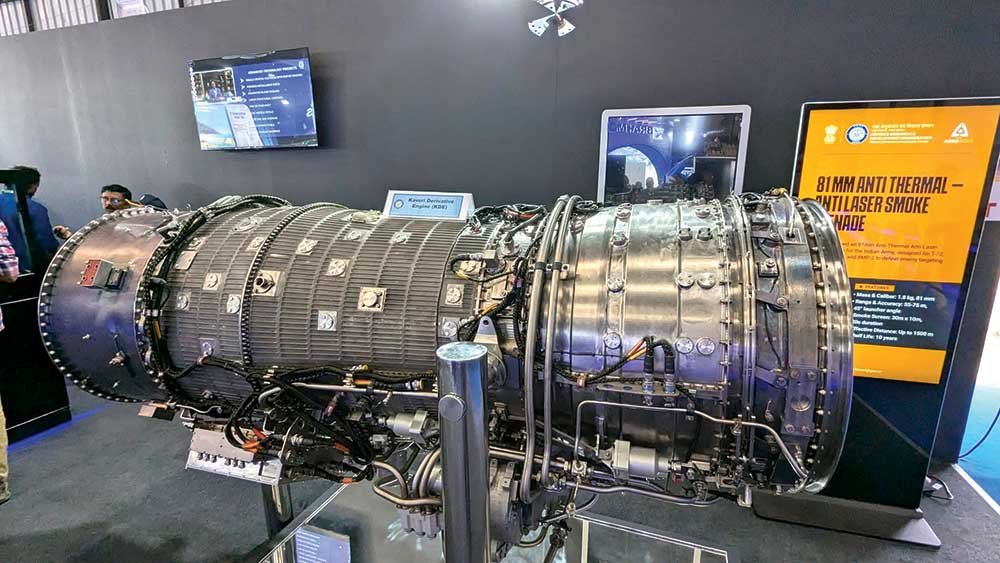
Aeroengine development is a complex national security challenge and should have been at par with other strategic programmes such as nuclear and space capabilities. It needed vision, strategic continuity, and investments to establish strengths in advanced metallurgy and materials, precision manufacturing, and robust testing facilities. This strategic vision needed to come from the nation’s apex leadership. China is a good example of how such a vision, long-term strategic focus, and investments have resulted in mastering critical capabilities, including aeroengine technology and manufacturing. Like China, India also has a centralised and top-down approach when it comes to strategic programmes in nuclear, space, and defence. However, in a vibrant democracy, centralised intent translates into bureaucratic control, fragmentation, and siloed execution, with little accountability.
India’s struggle for aeroengine capability remains a continuous search characterised by strategic discontinuity, lack of long-term focus, low and disrupted investments, inadequate testing infrastructure, lack of accountability and inefficiency, and poor recognition of the importance of this capability at the national leadership level
In China, on the other hand, its centralised intent and decisions integrate the ecosystem in execution with accountability. The lack of technocratic knowledge at the apex of leadership adversely impacts the progress of strategic capability. This is the major difference between China and India. China’s CCP elite often comes from engineering and technocratic backgrounds. Although authoritarian, China’s meritocratic system elevates leaders who grasp strategic technologies and steer projects. India’s leaders often see technology as a slogan (Aatmanirbhar Bharat), not as a hands-on priority, leaving execution to an underpowered bureaucracy.
India’s failure to master aeroengine capability, despite numerous opportunities such as the E-300 in the 1960s and the Kaveri since 1989, reflects a persistent lack of strategic foresight and acumen. The result is self-evident: China today operates its fully developed, mature indigenous engines like WS-10 and advanced versions like WS-15; India is still dependent on engine imports from the US, France, the UK, and Russia.
Engine Challenges for Tejas: The Way Forward
The production schedules of Tejas Mk 1As have been seriously impacted by delays in General Electric’s supply of F404-IN20 engines. This, in turn, adversely impacts the IAF’s force structure. It is time that the government and the IAF dealt with this problem from a long-term perspective. Leading engine manufacturers are loath-to-part with critical technologies. America’s policies make it even more difficult for American companies to share even basic production technologies. The only effective way is to leverage the large orders we give to these companies by locking them into a stake-holder partnership and through ruthless competition. HAL’s contract with GE for the manufacture of F414-INS6 engines for Tejas Mk2 is still to be concluded as it is stuck on technology transfer issues. Given these challenges, India’s approach should be well-focused: achieving mastery over aeroengine capabilities by the end of these contracts.

Tejas Mk 1A: First Batch of 83 Aircraft
The manufacture of the first batch of 83 aircraft is already behind schedule by three years on account of delays in the delivery of 99 × F404-IN20 engines. India’s approach should pressurise and penalise GE to accelerate delivery. Because these are off-the-shelf buys, it does not involve ToT other than maintenance services.
Second Batch of 97 Aircraft
Given the delays in the procurement of MRFA and the development of Tejas Mk2, the IAF has decided to proceed with an additional order of 97 × Tejas Mk 1A. The government and IAF must decide on an alternate engine strategy for this batch of 97 aircraft. Some argue that this will delay the program, as it requires redesign and testing to accommodate the new engine. The argument is weak if one keeps larger and long-term strategic issues in mind. Since GE has said it could supply only 10 engines a year, it makes no sense to continue with the same engine for the second batch of 97 aircraft, as the production schedule will extend beyond ten years, which is unacceptable. The contenders for this alternate engine strategy could be Snecma’s M88-4E and Eurojet’s EJ-200.
Snecma’s M88-4E is a derivative of M88-2, which powers Rafale. It has slightly less thrust at 75 kN compared to 84 kN delivered by F404-IN20. However, in development tests, the thrust performance of 4E is reported to have gone up to 90 kN. The engine is smaller, has a better thrust-to-weight ratio, better fuel efficiency, and a much lower infrared signature. Because the IAF is already operating a Rafale aircraft, the commonality aspect is a distinct advantage.
Eurojet’s EJ 200, which powers the Eurojet Typhoon, is a more advanced engine that produces a thrust of 90 kN. This is also a smaller engine with advanced technologies, lower infrared signature, comparable fuel efficiency, modular design for easy maintenance, and the distinct advantage of German metallurgy. It has a high thrust-to-weight ratio (9.17:1 vs F404’s 7.8:1), is lighter (at 990 kg), and is punchier, thus enhancing manoeuvrability. The thrust edge of EJ 200 and its ease of integration make it a strong contender.
As an aspiring great power, India should have treated this as a strategic project—on par with its space, nuclear, and Integrated Guided Missile Development Programme (IGMDP) initiatives. A clearer understanding of the importance of aeroengine capability as a strategic multiplier would provide the right focus, support, and accountability
Challenges and Advantages
Both engines are smaller and lighter. It will require some redesign of the fuselage and intakes to accommodate either of the engines, along with flight testing and certification. This can be done within three years if the project is taken up on a war footing.
India’s second batch of 97 Mk 1A will require at least 120 engines, including reserves. This makes it an ideal case for production in India with significant technology transfer. The choice of an alternate engine for Mk 1A is a mandatory strategy for India to hedge against the vagaries of American dependency. More importantly, India can leverage this project by ensuring a stakeholder partnership in further engine developments for AMCA and other projects. While GE 414 can power Mk 2, this hedging strategy is equally applicable.
Kaveri Engine
India must leverage an alternate engine strategy to plug the gaps in the Kaveri engine programme and bring it to logical maturity. Smart partnership in this programme will enable India to finally master the aeroengine complexity.
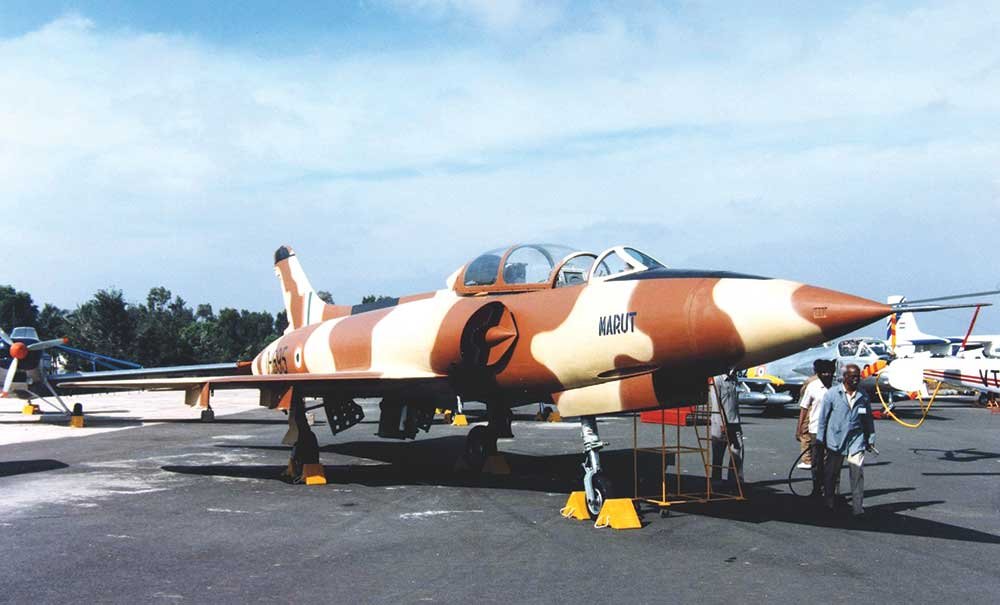
Moving Forward with a Strategic Action Plan
India’s struggle for aeroengine capability remains a continuous search characterised by strategic discontinuity, lack of long-term focus, low and disrupted investments, inadequate testing infrastructure, lack of accountability and inefficiency, and poor recognition of the importance of this capability at the national leadership level. A country’s ability to successfully design and manufacture an aeroengine is a strategic capability. Mastering this capability means control over many aspects of critical technologies in areas of metallurgy, advanced materials, electricals and electronics, thermodynamic optimisation, advanced design and manufacturing capabilities such as single-crystal blade design, precision engineering, heat treatments, and advanced testing processes, and robust test facilities such as high-altitude test facilities and flying test beds.
As an aspiring great power, India should have treated this as a strategic project—on par with its space, nuclear, and Integrated Guided Missile Development Programme (IGMDP) initiatives. A clearer understanding of the importance of aeroengine capability as a strategic multiplier would provide the right focus, support, and accountability. While addressing the short-term problems of GE engines for Tejas aircraft, India must implement a long-term strategy with a clear focus on mastering aeroengine capabilities. An alternative engine strategy for Tejas Mk 1A should be the start of a larger strategy in which India matures its Kaveri project and derives lessons to implement in the development of advanced engines using a risk-sharing stakeholder partnership approach. This would be a leapfrogging strategy with strong long-term strategic foundations.
–The writer, a AVSM VM PhD (V) is a former Deputy Chief of Integrated Defence Staff for Policy, Plans, & Force Development (DCIDS – PP & FD). He is currently the President of The Peninsula Foundation, a Chennai-based public policy research think tank. The views expressed are of the writer and do not necessarily reflect the views of Raksha Anirveda

